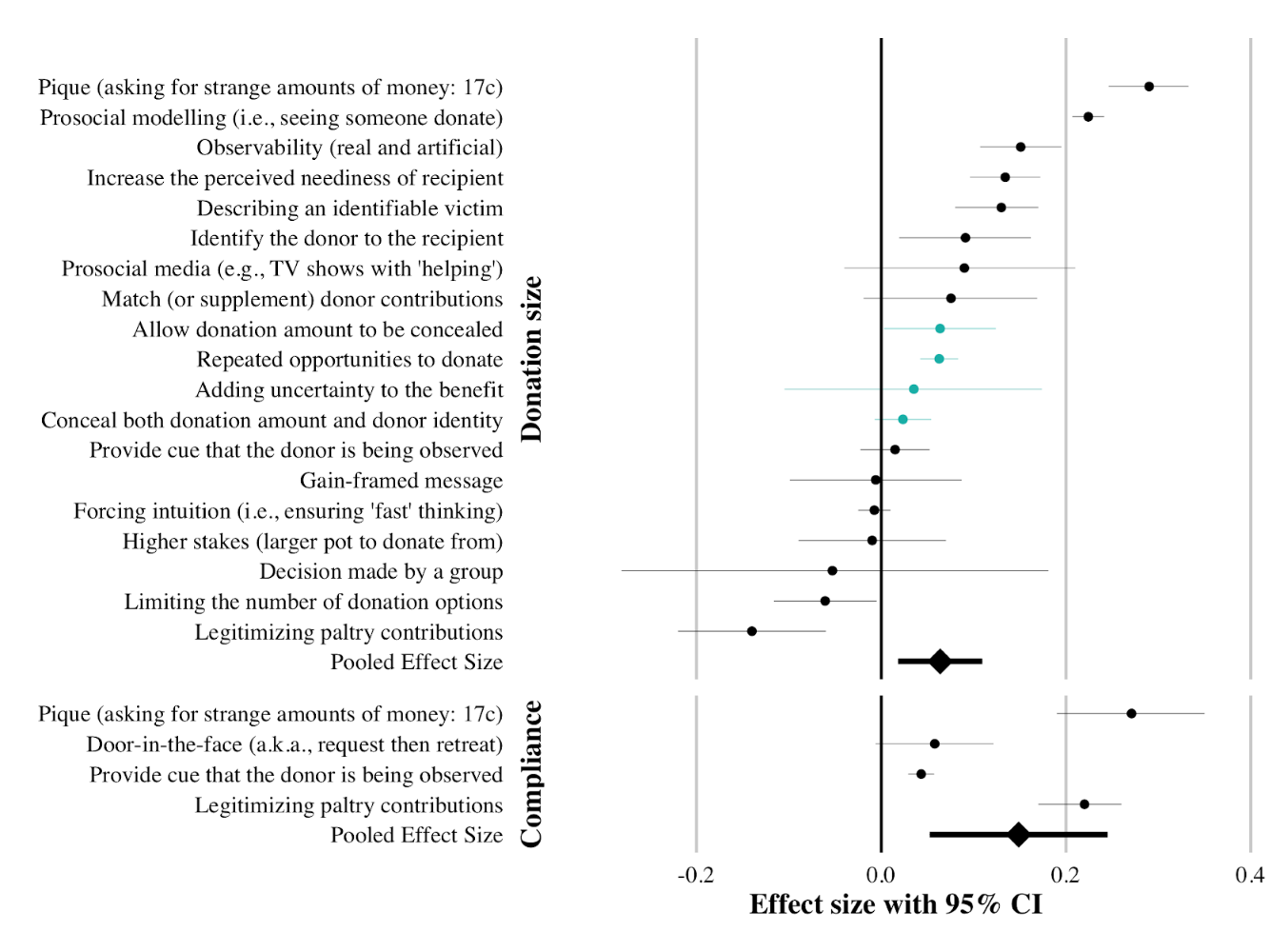The Rapid Effective Action Development Initiative (READI) recently completed a rapid overview of reviews exploring 'What works to promote charitable donations?'.
A detailed academic report on the project is being revised for submission to a journal (see the preprint here). This short summary document describes the key findings and recommendations from the project and provides resources for interested practitioners and researchers.
Key messages
- We identified and synthesized the results of 14 relevant reviews (see Appendix 1).
- Together, these reviews summarise 985 primary studies and donations from 1,510,996 people
- 35 relevant effects were identified (See Appendix 2).
- Interventions supported by review level evidence, include:
- Promoting the charitable donation as tax-deductible
- Framing even small contributions as helpful for achieving charitable aims (while people donate less due to anchoring, more people donate)
- Highlighting the impact of the donation to a needy beneficiary
- Interventions undermined by review level evidence, include:
- Asking for a large amount or commitment, then reducing the ask (“door-in-the-face”)
- Using artificial cues (“watching eyes”) to make people feel like they are being watched (3 reviews assessed this effect)
- Minimising disclosure of government funding for fear of “crowding out” donors’ motivations to give
- Interventions that reduced charitable donations, include:
- Emphasising the large number of people in need (“compassion fade”)
- The relative wealth of the donor in a contrived experiment
- A wide range of contexts were examined (See Appendix 3), but some of the most relevant and important remain widely overlooked, including field trials (especially randomised controlled trials), and the promotion of ‘effective philanthropy’.
- Interventions supported by review level evidence, include:
Updated forest plot
See the latest draft for the full image and details.

This is our first project, so please complete this short feedback form if you read the output!

Based on the feedback, I think that a few people didn't realise that we have drafted a (50 page) preprint paper - the link above is just to the public summary. Sorry for not making that clearer!
Were you able to get the net effect on total donations?
Hey Michael! The literature on "Framing even small contributions as helpful for achieving charitable aims" (referred to as 'Legitimizing Paltry contributions'/'LPC' in the literature ) suggests that the technique leads to similar contributions overall.
Here is what the relevant review states:
"To conduct this analysis, we calculated total donation amounts for both experimental and control
groups from 10 research reports representing 18 comparisons (U.S. samples only) and
a total of 2,054 participants. Care was taken to ensure donation totals were adjusted to
reflect an equal number of participants in the LPC and control conditions for each
study. Because our observations of these data were at the study level (e.g., total amount
contributed in the LPC and control conditions), it was not possible to use traditional
meta-analytic techniques to test for differences. Instead, we examined differences
using a paired t test with the experimental and control condition donation totals from
a given study each representing one data point. The difference between the donation
totals for experimental (M = 49.07, SD = 49.68) and control conditions (M = 46.04,
SD = 57.01) was not statistically significant, t(17) = .41, p = .69 (two-tailed)."
Here is their summary of related prior research:
"The results from studies that have examined the effects of LPC on donation size are
mixed. Whereas the findings from some research reports show that legitimizing paltry
contributions decreases donation amounts (e.g., Reeves et al., 1987; Shearman & Yoo,
2007), others show that the tactic does not affect charitable contributions (e.g., Cialdini
& Schroeder, 1976; Weyant, 1984; Weyant & Smith, 1987) or even increases them
(e.g., Dolinska & Dolinski, 2014; Dolinski et al., 2005)."
Let me know if you want a copy of the paper.
Awesome - thank you!
Great work team!